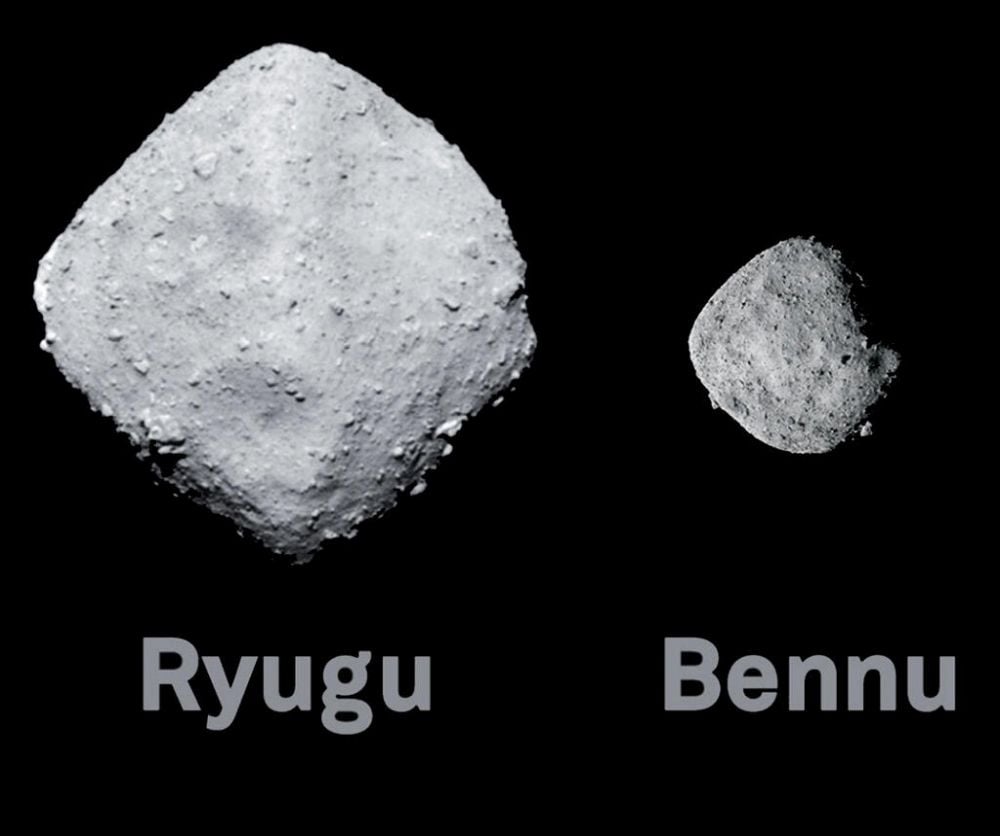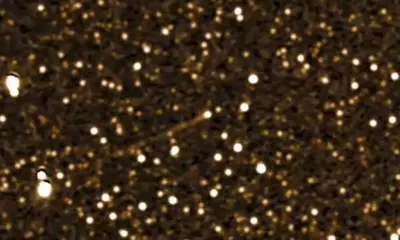Science
Asteroids Ryugu and Bennu Confirmed as Sibling Bodies

Research has confirmed that asteroids Ryugu and Bennu originated from the same parent body, according to a study published in *The Planetary Science Journal*. This significant finding follows the successful missions of the Japan Aerospace Exploration Agency’s (JAXA) Hayabusa2 and NASA’s OSIRIS-REx, which returned samples from Ryugu and Bennu, respectively.
Both missions have provided scientists with vital information about these celestial bodies. The Hayabusa2 mission returned samples to Earth in 2020, while OSIRIS-REx completed its mission in 2023. The analysis of these samples revealed unexpected compounds, suggesting that asteroids play a more complex role in the history of our Solar System than previously thought.
Key Discoveries from the Samples
The Ryugu sample contained uracil, one of the four essential RNA nucleotides, indicating that asteroids could have contributed to the building blocks of life on Earth. Meanwhile, the Bennu sample revealed unexpected phosphate compounds, hinting at a potential connection to an ancient body that once hosted an ocean.
These findings underscore the importance of asteroids as more than just remnants of space rock. They are fragments of larger bodies that collided in the early Solar System, and each one holds clues to our cosmic past. Understanding which asteroids share a common origin can illuminate the broader history of planetary formation.
Research led by Dr. Anicia Arredondo from the Southwest Research Institute has confirmed that both Ryugu and Bennu are part of the Polana collisional family, situated in the main asteroid belt between Mars and Jupiter. The study titled “JWST Spectroscopy of (142) Polana: Connection to NEAs (101955) Bennu and (162173) Ryugu” utilized data from the James Webb Space Telescope (JWST) to analyze mid-infrared and near-infrared spectra from the asteroids.
The Role of the James Webb Space Telescope
The JWST played a crucial role in this research by obtaining detailed spectral data from the asteroids. The authors noted, “Spectral features at similar wavelengths in the spectra of Polana and those of Bennu and Ryugu support the hypothesis that both asteroids originated in the Polana family.” This connection adds a new layer of understanding to the relationship between these bodies.
Polana, the largest body in this family, has a diameter of approximately 55 kilometers. In contrast, Bennu measures about 500 meters, while Ryugu is slightly larger at 850 meters. Despite their differences in size, the spectral analysis indicates that all three bodies share a common ancestry.
Dr. Becker, a co-author of the study, explained that the gravitational influence of Jupiter likely altered the orbits of Ryugu and Bennu, pushing them away from Polana. As a result, their surfaces have been modified by their proximity to the Sun, which has implications for their thermal and aqueous histories.
The study also points to variations in hydration between the three bodies. Notably, the depth and width of the 2.7 micrometer feature, indicative of hydrated minerals, differ between Polana and Ryugu more than between Polana and Bennu. These differences could be attributed to the environments in which they formed and the effects of space weathering over time.
In conclusion, the research presents compelling evidence that Ryugu and Bennu are siblings from the same parent body. The authors state, “We find that similarities in the shapes and strengths of many of the spectral features across the NIR and MIR… support the hypothesis that Bennu and Ryugu could have originated in the new Polana family.”
As further analyses of the returned samples continue, scientists look forward to gaining even deeper insights into the formation and evolution of these remarkable asteroids, enriching our understanding of the early Solar System.
-

 Technology5 months ago
Technology5 months agoDiscover the Top 10 Calorie Counting Apps of 2025
-

 Health3 months ago
Health3 months agoBella Hadid Shares Health Update After Treatment for Lyme Disease
-

 Health3 months ago
Health3 months agoErin Bates Shares Recovery Update Following Sepsis Complications
-

 Technology4 months ago
Technology4 months agoDiscover How to Reverse Image Search Using ChatGPT Effortlessly
-

 Technology1 month ago
Technology1 month agoDiscover 2025’s Top GPUs for Exceptional 4K Gaming Performance
-

 Technology3 months ago
Technology3 months agoElectric Moto Influencer Surronster Arrested in Tijuana
-

 Technology5 months ago
Technology5 months agoMeta Initiates $60B AI Data Center Expansion, Starting in Ohio
-

 Technology5 months ago
Technology5 months agoRecovering a Suspended TikTok Account: A Step-by-Step Guide
-

 Health4 months ago
Health4 months agoTested: Rab Firewall Mountain Jacket Survives Harsh Conditions
-

 Lifestyle5 months ago
Lifestyle5 months agoBelton Family Reunites After Daughter Survives Hill Country Floods
-

 Health3 months ago
Health3 months agoAnalysts Project Stronger Growth for Apple’s iPhone 17 Lineup
-

 Technology4 months ago
Technology4 months agoHarmonic Launches AI Chatbot App to Transform Mathematical Reasoning





















